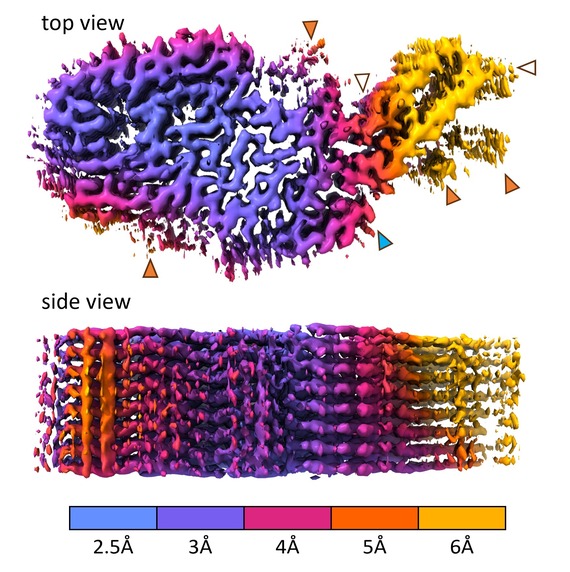| Thursday, Oct. 24, 2024  This 3-D cryo-electron microscopic density map shows the layered structure of a short segment of a chronic wasting disease prion from the top and side. The different colors represent differences in resolution within the structure. (NIAID) NIAID scientists have published the near-atomic structure of a chronic wasting disease (CWD) prion from a white-tailed deer. The work, in Acta Neuropathologica, should lead to explanations of how CWD prions spread and become the most naturally infectious of the many mammalian protein aggregation diseases. Such detailed knowledge could guide the rational design of vaccines and therapeutics, as well as identify mechanisms that protect humans from CWD pathogens in deer, elk, moose, and reindeer. To date, no CWD transmission to humans has been substantiated, though the "mad cow disease" epidemic of the mid-1980s and mid-1990s has raised questions whether CWD might be transmissible to humans who consume meat from infected cervids. The new CWD structure suggests preliminarily why people might be protected from infection. Prion diseases are degenerative, untreatable, and fatal diseases of the central nervous system that occur in people and other mammals. National Institute of Allergy and Infectious Diseases | National Institutes of Health | | | |
No comments:
Post a Comment